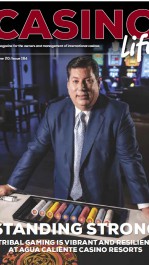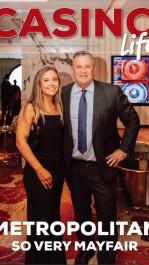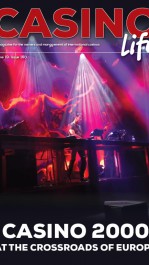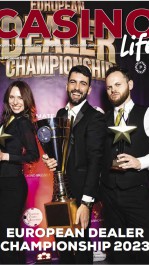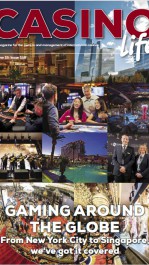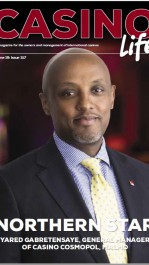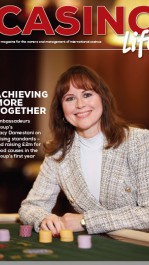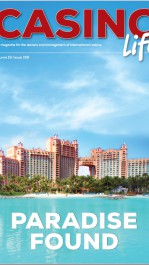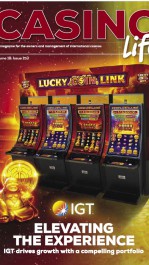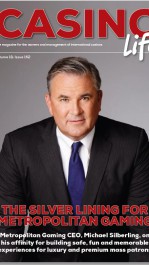Taking the ‘Sin’ Out of ‘Sin City’: Has Vegas Lost Its Gambling Mojo?
More people than ever are jetting out to Las Vegas, but city-wide gambling revenue is falling. Sam Miranda investigates…
It seems that gambling may no longer be the backbone of the Las Vegas economy. While current tourism figures are healthy, visitors are spending less overall and fewer punters are hitting the casinos. According to the Review Journal, Las Vegas hotel occupancy in July 2013 stood at 90.6 per cent – a new record. However, Nevada gambling revenue reported a $1.35 billion net loss in 2013, the fifth straight year of losses.

These figures are even more striking when placed in context with Sin City’s historical peak. Gambling911 reports that the casino market accounted for 59% of Nevada state revenues during the boom years of the mid-eighties, compared to 45.1% last year. Evidently, Vegas the tourist destination is still drawing the crowds, while Vegas the gambling hot spot is floundering.
Recently, LiveRoulette.co.uk conducted two surveys, in which they asked 1000 UK respondents and 500 Americans, “What would be your main reason for you to visit Las Vegas?” Their results indicated that ‘Gambling’ ranked below other activities overall in terms of priority. In our British survey, only 21.2% of respondents chose this category as their main reason to visit Las Vegas, second to ‘Family Holiday.’ For Americans, ‘Gambling’ came in third with 21.9%, behind ‘General Entertainment e.g. Shows and Concerts’ (29.2%) and ‘Family Holiday’ (22.1%).
Experts on the Las Vegas leisure industry corroborate with these findings and propose some explanations for the current state of affairs. Stephen P. A. Brown (director of the Centre for Business and Economic Research at the University of Nevada) offers the following view:
“Gaming went down more than total visitor spending (in 2012), by a greater percentage [because] the visitors who have come, come for clubs and shopping. They’re buying swimsuits to go to the day clubs and evening clothes to go to the nightclubs.”
While clubbing did not represent the most popular category for our respondents overall, it topped the results tables for young people - both British and American respondents between the ages of 18 and 24. The relatively even distribution of age and gender groups in our voluntary sample suggests that the composition of the tourist population in Vegas might be diversifying. The ‘traditional’ core demographic for Vegas’ casinos (men between the ages of 25 and 44) continued to rank ‘Gambling’ highly in their priority list, but the number of people from this demographic who took part in our survey was proportionally smaller than expected.
As the new fiscal year approaches, with gambling revenue on the slide and competing gambling destinations cropping up both domestically and internationally, we are witnessing an undeniable change in the way Vegas is perceived by the public.
A Different Kind of Las Vegas Tourist
The interests and spending habits of tourists in Sin City have altered substantially in recent years, as indicated by our survey results and research conducted by the Las Vegas Convention and Visitor’s Authority.
The body carried out a survey of visitors to the Vegas over the course of five years (2008 - 2012), asking what brought them to city. The number of tourists who identified ‘gambling’ as the primary motivation for their visit dropped from 13 per cent in 2008 to 8 per cent in 2012, while the vast majority (47 per cent) elected to visit Vegas for ‘vacation/pleasure.’
LiveRoulette.co.uk’s data confirms this trend has continued, with the majority of UK respondents electing ‘Family Holiday’ as their primary motivation for a visit to Las Vegas. Americans also ranked this category more highly than ‘Gambling,’ but their number one priority was Las Vegas’ theatrical attractions.
Gambling statistics from the Las Vegas Convention and Visitor’s Authority are also highly revealing. The number of tourists who gambled in Vegas in any capacity (from a nickel blown on a slot machine to a multi-grand table wagers) stood at 85 per cent in 2008 versus 72 per cent in 2012. More detailed data – the number of hours visitors spent gambling, the average number of casinos visited, the proportion of ‘trip budgets’ set aside for gambling etc – trumpeted the same message: tourists are gambling less in Las Vegas.
A general downward trend in the gambling market has been measurable since the recession rocked the global economy in 2008. Tourists were left with less disposable income and uncertain job security and the Las Vegas economy (largely propped up by casino tourism) plummeted. Subsequently, the Vegas tourism industry has recovered somewhat, but casinos are still struggling.
While other attractions – restaurants, clubs, theme parks etc. - are making a resurgence (up 5 per cent overall since 2011), the gambling market in Vegas is trailing. Evidently, tourists have returned to Vegas since the recession but they aren’t the same eager punters who flocked to the Strip before the bottom fell out of the economy. Rather, they are increasingly coming to regard the city as an all-round holiday destination.
It is possible that Vegas has become a victim of self-sanitisation. Historically, the danger and sleaze of Sin City’s infamous underbelly has been an integral part of the city’s appeal. For decades following its ascendance to international casino dominance in the 1940s, Las Vegas served as a dark fantasy divested from the outwardly pristine suburban ideal of American life, as Dennis McBride of the Nevada State Museum observes:
“The whole idea of sin as being kind of surreptitious and naughty and cute is how they promoted Las Vegas in those days. And it was true in that sense because you could do all those things here and you couldn’t really do them anywhere else without running up against some state blue laws or dry laws or nude laws.”
However, in the 1980s, Vegas began to pursue a more legitimate image, presenting itself as a desirable getaway for holidaymakers rather than simply a carnival of vice.
This has, perhaps, worked too well. Efforts to ‘clean-up’ the image of Sin City may well have obscured its once-lucrative casino market with palatial hotels, classy eateries and popular nightclubs. Today, with the casino market proving an increasingly frail bedrock on which to rest the economy of Las Vegas, city officials are being forced to diversify and emphasise the appeal of the city’s non-gambling attractions. As yet, a fiscal gap remains that has yet to be entirely filled, despite the improved footfall.
As an alternative solution, some casino managers have been resorting to increasingly sophisticated strategies for tempting in new punters and keeping players at the tables. Everything from artificially-heightened oxygen levels and psychedelic carpets to that fact that leaving a Las Vegas hotel necessitates walking through at least one casino are carefully tailored gambits to inspire and sustain gambling.
New Competition as Gambling Branches Out
Furthermore, Las Vegas’ 80-year stranglehold on the worldwide casino tourism industry is finally beginning to slip as new gambling destinations emerge. The increasing respectability and public acceptance of gambling internationally has resulted in a number of locales getting in on the action.
Ironically, the increased respectability afforded to the gambling industry by Las Vegas has resulted in the emergence of fresh competition from around the globe. A number of locations in East Asia are beginning to seriously compete for Vegas’ casino crown. Macau’s casino revenue, as reported by RightCasino.com, leaped to $4.57 billion in October 2013, surpassing Las Vegas as the global gambling hotspot in that month.
Meanwhile, Manila’s annual gaming figures are expected to double to $4 billion in a matter of years. The comparatively inexpensive Asia-Pacific gambling market is drawing players away from the Vegas strip, while serious card players from Europe and the States are making the long-haul to compete in high-stakes games unavailable in Las Vegas.
Closer to home, Vegas might be facing increased domestic competition following the passing into law of a bill permitting licenced casinos in New York State. Michael Mulgrew of the pro-casino coalition argues that it is in the interest of New York to keep punters on local soil: “It is not a question of whether New Yorkers will go to casino resorts, they are already doing it…We want to keep it at home.”
As the decade rolls on, it is likely that gambling will account for a more modest chunk of Nevada’s overall revenue (although gambling profits bounced back slightly last year.) Whether promoting Las Vegas as an all-round holiday destination will plug the gap left by the shrinking casino market remains to be seen.
At present, it seems doubtful that Las Vegas will ever reclaim the dizzying fiscal heights of its glory years as the world’s casino heartland.
By Sam Miranda. Sam is a gaming industry journalist and editor. His work has also been featured on CalvinAyre and iGamingBusiness. He’s particularly interested in gambling culture and ethics.

.gif)

